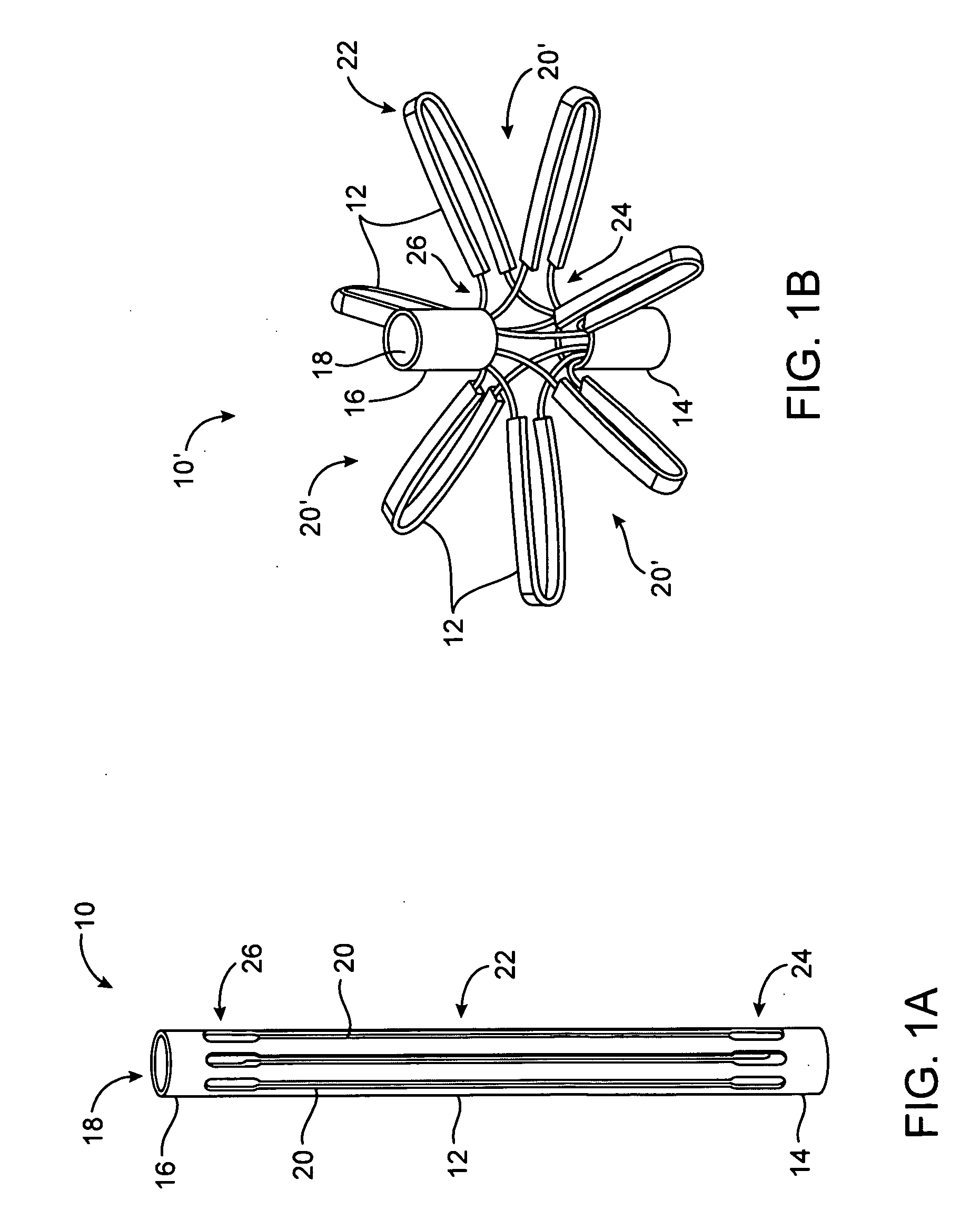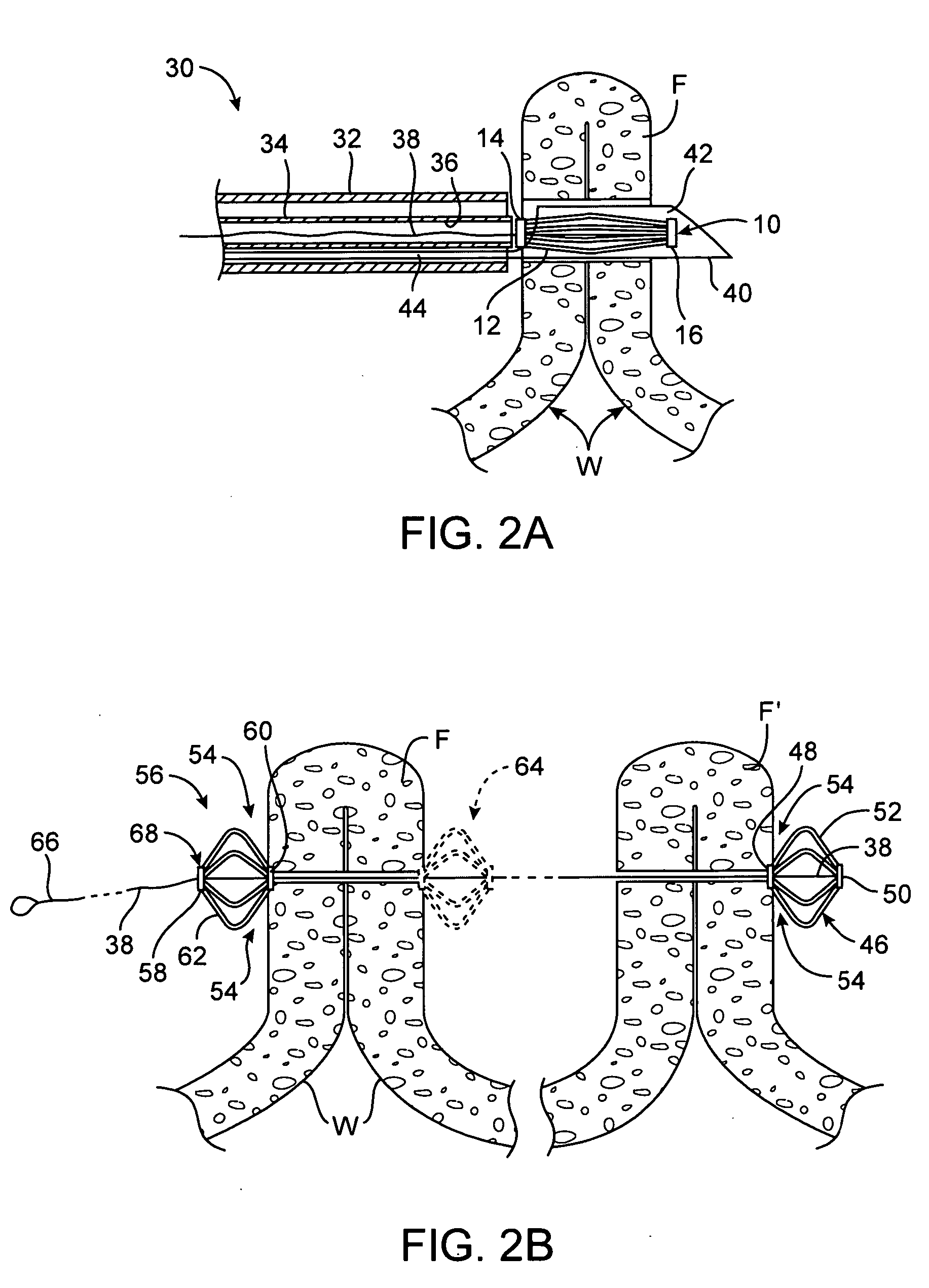System for optimizing anchoring force
a technology of anchoring force and optimizing system, which is applied in the field of system for optimizing anchoring force, can solve problems such as over-compression of underlying tissu
- Summary
- Abstract
- Description
- Claims
- Application Information
AI Technical Summary
Benefits of technology
Problems solved by technology
Method used
Image
Examples
Embodiment Construction
[0050] Generally, in creating and securing a plication within a body lumen of a patient, various methods and devices may be implemented. The anchoring and securement devices may be delivered and positioned via an endoscopic apparatus that engages a tissue wall of the gastrointestinal lumen, creates one or more tissue folds, and disposes one or more of the anchors through the tissue fold(s).
[0051] In securing the tissue folds or anchoring to or from these tissue folds or plications, over-compression of the tissue directly underlying the tissue anchors is preferably avoided. Over-compression of the underlying tissue may occur if the anchor compresses the tissue to such a degree that tissue necrosis or cutting of the underlying muscularis or serosal tissue by the anchor occurs. The anchor preferably exerts a force, e.g., about 0.1-0.5 lbs, sufficient to maintain or secure a tissue plication yet still allows for adequate blood flow to occur within the tissue underlying the anchor. Acco...
PUM
 Login to View More
Login to View More Abstract
Description
Claims
Application Information
 Login to View More
Login to View More - R&D
- Intellectual Property
- Life Sciences
- Materials
- Tech Scout
- Unparalleled Data Quality
- Higher Quality Content
- 60% Fewer Hallucinations
Browse by: Latest US Patents, China's latest patents, Technical Efficacy Thesaurus, Application Domain, Technology Topic, Popular Technical Reports.
© 2025 PatSnap. All rights reserved.Legal|Privacy policy|Modern Slavery Act Transparency Statement|Sitemap|About US| Contact US: help@patsnap.com



